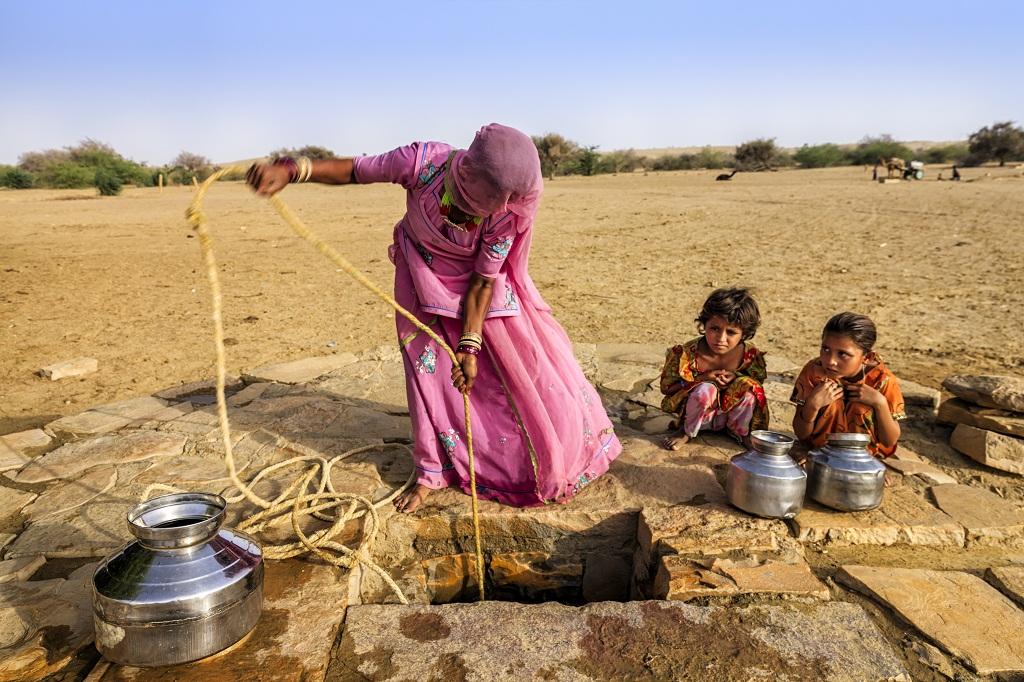News Highlight
Extreme weather events continue to hamper access to potable water, sanitation and hygiene; urgent action needed: WHO
Key Takeaway
- The increasing frequency and intensity of climate-related extreme weather events continue to impact universal access to safe and sustainably managed water, sanitation and hygiene (WASH), the World Health Organization (WHO).
- To achieve Sustainable Development Goal (SDG) six, which is mandated by the United Nations (UN), progress must be hastened in many nations.
- It ensures universal access to water and sanitation by 2030, highlighted the analysis.
- According to the Global Analysis and Assessment of Sanitation and Drinking Water (GLAAS) report, less than one-third of nations reported having sufficient human resources to undertake crucial WASH responsibilities.
Global Analysis and Assessment of Sanitation and Drinking Water (GLAAS) report
- What is the GLAAS Report?
- The GLAAS report was released by the World Health Organization (WHO) and UN-Water.
- In addition, the study gathers updated information on drinking water, sanitation, and hygiene (WASH) from 121 nations and territories and 23 external support organisations (ESAs).
- Furthermore, it acts as a worldwide guide to commitments, priority-setting, and activities for the second part of the 2030 Agenda for SDG.
- The research also identifies chances to move forward more quickly in crucial WASH areas that impact the calibre and sustainability of WASH services and delivery, pandemic readiness, and climate change resilience.
- UN-Water
- Firstly, the United Nations water and sanitation initiatives are coordinated through UN-Water. UN-Water is a ‘coordination mechanism’.
- Moreover, it is composed of UNs members and international organisations (Partners) working on water and sanitation issues.
- Ensuring that Members and Partners respond to water-related challenges in a coordinated manner is the responsibility of UN-Water.
Water sanitation and hygiene
- Briefing
- Urgent action is needed globally and locally to achieve safe and sustainably managed water, sanitation and hygiene for all to prevent devastating impacts on the health of millions of people.
- Only 25% of nations are on track to meet their national sanitation goals, whereas 45% are on track to meet their nationally set drinking-water coverage goals.
- Less than one-third of nations reported having enough human resources to complete essential drinking water, sanitation, and hygiene (WASH) tasks.
- Only slightly more than two-thirds of nations have WASH strategies that target people disproportionately impacted by climate change.
Health risks: Drinking water and sanitation
- The most urgent water, sanitation, and health actions
- The three top priorities are providing sufficient quantities of safe water, basic sanitation arrangements and promoting good hygiene.
- The priority is to provide adequate water, even if its safety cannot be guaranteed, and to protect water sources from contamination.
- A minimum of 15 litres per person per day should be provided as soon as possible.
- During an emergency, people may use untreated water for laundry, bathing, and other purposes.
- Water quality can be improved over several days or weeks.
- Following disasters, there are significant health concerns from improper excreta disposal.
- It is crucial to offer lavatory facilities right once where typical sanitary systems have been damaged or destroyed.
- Emergency facilities are frequently temporary and must be gradually upgraded or replaced as the situation changes.
- The immediate response may also include establishing or reinforcing sewage evacuation services, bypassing blocked sewers or carrying out an intensive septic tank or latrine emptying in periurban areas.
- Every effort should be made to allow people to use their existing toilets through temporary repairs to broken sewers and sewage treatment works.
- To facilitate adequate cleanliness, water must be provided in ample quantities.
- Hands should be washed immediately after defecation, after handling babies’ faeces, before preparing food and before eating.
Health risks: stagnant water
- What are the health risks associated with stagnant water?
- Many insects, particularly mosquitoes that can spread diseases, breed in stagnant or slowly moving water pools.
- The term “vector” refers to these mosquitoes.
- Different mosquito species carry various diseases, and they will also breed in various kinds of water storages.
- Malaria and dengue are the main water-associated vector-borne infections in the tsunami tragedy, with Japanese encephalitis conceivably and more speculatively occurring in local settings.

Immediate action
- Water
- Suppose water is deemed by local authorities to be unsafe. In that case, bottled water may need to be distributed or clean water transported by tanker truck to distribution points to meet immediate needs.
- Sometimes, breweries, soft drink bottling industries, and dairies can provide temporary water sources and treatment facilities.
- Families must be informed that they must treat their home water if it cannot be provided.
- Household water purification is efficient, easy, and reasonably priced.
- Chlorine or iodine tablets or sachets of combination flocculant/disinfection powder may have been supplied in the wake of emergencies.
- If so, water should be treated according to the instructions provided with the tablet.
- Hygiene
- Even though there may be a water shortage and limited sanitation options in an emergency, it’s crucial to ensure that some water supply is used for personal hygiene to reduce health hazards.
- It is crucial to emphasise the necessity of washing one’s hands with soap after using the restroom, handling baby waste, and making food.
- Using ash, sand, or other culturally appropriate replacements should be encouraged because soap can be in short supply during catastrophes.
- Sanitation
- It is crucial to offer lavatory facilities right once where typical sanitary systems have been damaged or destroyed.
- Emergency facilities are frequently temporary and must be gradually upgraded or replaced as the situation changes.
- Latrines of all types need to be properly cleaned and maintained.
Pic Courtesy: Down to Earth
Content Source: Down to Earth



